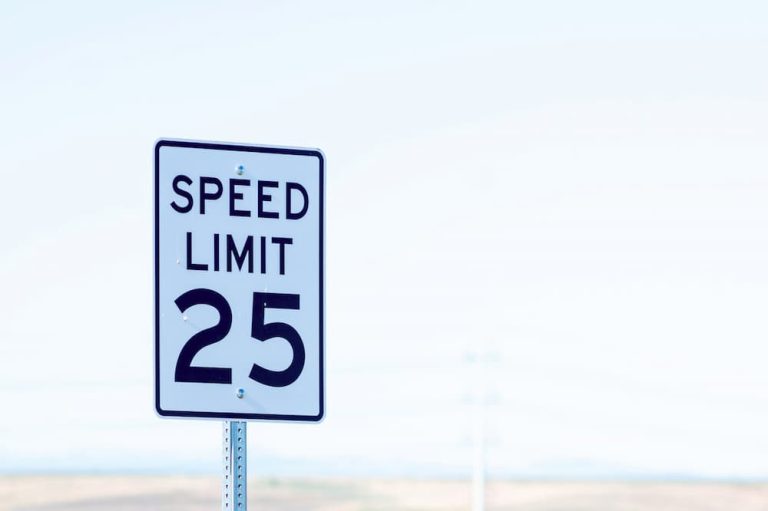Alabama Bicycle Laws | Cycling Laws In The State Of Alabama In 2023
From the importance of wearing helmets to the rules of passing safely, I’ll cover it all. I’ll also shed light on the penalties for violating these laws and answer some of the most frequently asked questions about cycling in Alabama.
This article is designed to help you navigate Alabama’s roads safely and legally.
So, buckle up your helmets, and let’s dive in!
The information provided in this article is not legal advice. None of our writers are lawyers and they also do not provide legal advice. The information published in this blog is provided for entertainment and educational purposes only. We do our best to explain the rules and regulations in easy to understand language. Although we do extensive research to make sure our information is accurate and useful, our synopsis may not reflect current legal developments or address your situation. We disclaim all liability for actions you take or fail to take based on any content in this article.
Contents
- Key Takeaways
- Riding in Formation
- Signaling and Stopping
- Passenger Rules for Bicyclists
- Equipment Limitations for Bicycles
- Safe Passing
- Helmets to Ensure Protection
- ‘I Share the Road’
- Laws for Distracted Driving
- Riding on Sidewalk
- Prohibition of Alcohol Consumption
- Use Separate Facilities
- Frequently Asked Questions About Cycling Laws in Alabama
- Conclusion
Key Takeaways

| Key Topic | Details | Takeaway |
|---|---|---|
| Safe Passing | Vehicles must pass a bicycle at a safe distance of no less than 3 feet on roads with speed limits of 45 mph or less and no double yellow lines. | Always maintain a safe distance when passing cyclists. |
| Helmet Use | Helmets are mandatory for people aged below 16 years when riding a bicycle. For adults, it’s not mandatory but recommended. | Wearing a helmet can prevent severe head injuries. |
| Distracted Driving | Reading, writing, or sending text messages is prohibited while operating a motor vehicle in Alabama. | Stay focused on the road, distractions can lead to accidents. |
| Riding on Sidewalks | Bicycles are prohibited from being ridden on the sidewalks in Alabama. | Always ride on the road, as far to the right as practicable. |
| Alcohol Consumption | It is prohibited to operate a bicycle while under the influence of alcohol. | Never ride under the influence, it’s dangerous and illegal. |
| Use of Cycling Paths | Bicyclists are required to use the path provided for them if available. | Use designated cycling paths for a safer ride. |
| Bicycle Light Laws | Bicycles must have a white headlight visible from at least 500 feet to the front and a red reflector visible from all distances from 100 feet to 600 feet to the rear. | Ensure your bicycle is equipped with the necessary lights for visibility. |
| Traffic Laws | Cyclists are expected to follow the same basic traffic laws as other drivers. | Obey traffic signals, stop signs, and yield to pedestrians. |
| Riding in Formation | Bicyclists should not ride more than two abreast unless on paths or parts of roadways set aside for the exclusive use of bicycles. | Keep the road open for others by not blocking traffic. |
| Signaling and Stopping | Bicyclists are required to slow down, come to a complete stop at stop signs and traffic devices signaling red, and signal when turning or coming to a stop. | Communicate your intentions to other road users to prevent accidents. |
| Passenger Rules | No bicyclist in Alabama is allowed to carry a passenger unless on a bicycle that was designed to do so. | Only carry passengers if your bike is designed for it. |
| Equipment Limitations | No bicycle shall be used to carry more persons at one time than the number for which it is designed and equipped. | Overloading a bike can lead to a loss of control. |
Riding in Formation
Cycling is a social activity, and often we find ourselves riding with friends or in a group. However, it’s crucial to know that Alabama has specific laws regarding how we ride in formation.
In Alabama, bicyclists are not permitted to ride more than two abreast unless they are on paths or parts of roadways set aside exclusively for bicycles. This law is designed to ensure the safety of both cyclists and other road users by preventing large groups of cyclists from blocking traffic.
So, next time you’re out riding with your buddies, remember to pair up and keep the road open for others.
Signaling and Stopping
Just like drivers of motor vehicles, bicyclists in Alabama are required to signal their intentions to other road users. This includes signaling when you plan to turn or come to a stop.
Additionally, bicyclists are required to slow down and come to a complete stop at stop signs and traffic devices signaling red.
These rules are not just about following the law – they’re about communication. By signaling your intentions, you’re letting other road users know what you plan to do, which can help prevent accidents and keep everyone on the road safe.
Passenger Rules for Bicyclists
If you’ve ever thought about bringing a friend along for a ride, there are some rules you need to know.
In Alabama, bicyclists are not allowed to carry passengers unless their bicycle is specifically designed to do so. This means that unless your bike has a built-in passenger seat (like a tandem bike or a bike with a sidecar), you should ride solo.
This rule is in place to ensure the safety of both the cyclist and the passenger, as carrying a passenger on a bike not designed for it can affect the bike’s balance and control.
Equipment Limitations for Bicycles
When it comes to equipment, Alabama has clear rules to ensure the safety of cyclists. Specifically, no bicycle shall be used to carry more persons at one time than the number for which it is designed and equipped.
This means that if your bike is designed for one person, it should only carry one person. Overloading a bike can lead to a loss of control, making it harder to steer, balance, and stop.
Safe Passing
In Alabama, it is required that all vehicles will pass a bicycle and overtake at a safe distance. The safe space is no less than 3 feet on any of the following:
- A marked bicycle lane beside any roadway
- If any roadway does not have a bicycle lane but has a speed limit of 45 miles per hour or less.
- If a roadway does not have any double yellow line separating cars from oncoming vehicles or indicates a no-passing zone.
The safe distance does not apply if the cyclist is riding within two feet of the road’s right shoulder. This safe distance law ensures that bicyclists get enough space to ride and rest in case of emergencies. Also, as vehicles are faster than cycles, this provides they slow down a bit.
Helmets to Ensure Protection
Helmets should not be only for motor vehicles. Alabama laws require that people aged below 16 years must wear a protective helmet whenever they are riding a bicycle or taking a ride on a bicycle as a passenger. For adults, it is not mandatory but recommended to wear a helmet. Any crash can result in severe head injury. A basic helmet can save your life.
The license plate ‘I Share the Road’ started in 2017. The Fairhope Cycling Project uses the proceeds of this program. This project promotes and makes people aware of bicycle safety.
Another goal of this project is to communicate road safety to the people of Alabama. Not only bicyclists, but the road must also be safe for everyone.
Laws for Distracted Driving
Reading, writing, or sending text messages is wholly prohibited while operating a motor vehicle in Alabama. The law became effective in 2012 and is still in use.
Riding on Sidewalk
It is prohibited to operate any vehicle on a sidewalk or sidewalk area, except for an authorized temporary or permanent driveway. Bicycles are considered vehicles in the state of Alabama, so this law applies to bicycles as well.
Prohibition of Alcohol Consumption
As Alabama considers a bicycle a vehicle, it is completely prohibited to operate a bicycle while under the influence of alcohol. The punishment is severe for operating a bicycle or any vehicle after alcohol consumption or other narcotic substances.
Use Separate Facilities
Alabama State requires that bicyclists use the path provided for them. In many places, there is a path for cyclists beside the roadway. The cyclists must use that path.
Frequently Asked Questions About Cycling Laws in Alabama
Here are the questions that our readers ask most often.
What are the bicycle light laws in Alabama?
Bicycles are required to have a white headlight visible from at least 500 feet to the front and a red reflector visible from all distances from 100 feet to 600 feet to the rear. Bicycles are also required to have a red taillight if they are ridden after dark.
Do cyclists have to obey the same traffic laws as drivers?
Yes, cyclists are expected to follow the same basic traffic laws as other drivers, with a few exceptions. For example, cyclists are not required to have a driver’s license or insurance. However, they are required to obey traffic signals, stop signs, and yield to pedestrians.
Do cyclists have to wear helmets in Alabama?
Yes, cyclists under the age of 16 on a public roadway must wear a bicycle helmet.
Can cyclists ride on the sidewalk in Alabama?
No, bicycles are prohibited from being ridden on the sidewalks in Alabama. They are required to ride on the road, as far to the right as practicable.
What are the penalties for violating bicycle laws in Alabama?
The penalties for violating bicycle laws in Alabama vary depending on the violation. However, some common penalties include fines, points on your driver’s license, and even jail time.
Conclusion
Understanding and adhering to Alabama’s bicycle laws is not just about staying on the right side of the law, it’s about ensuring safety for ourselves and others on the road. From riding in formation to signaling and stopping, from passenger rules to equipment limitations, these laws are designed to protect us and make our cycling experience more enjoyable.
Helmets are not just for those under 16 – they’re a crucial safety measure for everyone. And while carrying a passenger might seem like fun, it’s only allowed if your bike is designed for it. Let’s not forget the importance of equipment limitations – your bike should only carry as many persons as it is designed and equipped for.
As we pedal our way across Alabama’s beautiful landscapes, let’s keep these laws in mind. Ensuring a safe, law-abiding journey is the first step to a great cycling adventure. So, buckle up, ride safe, and enjoy the ride!
Please leave a comment below if you would like to learn more about the Alabama motorized bicycle laws and electric bike laws in Alabama.






